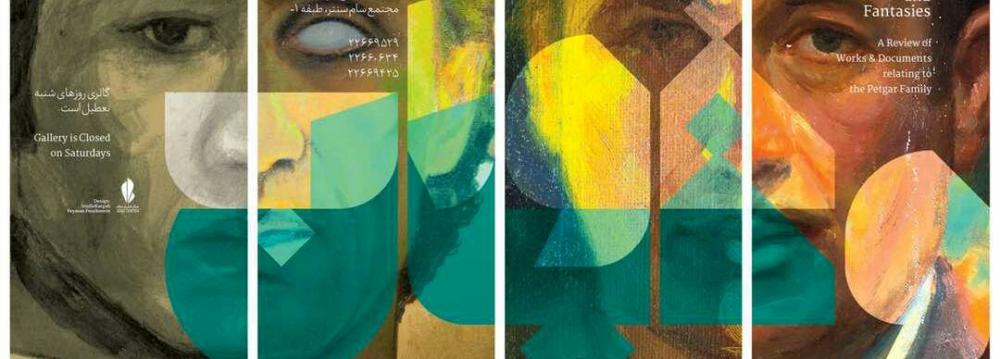Paintings, drawings and documents left behind by the Petgar family will be on view at Salam Art Gallery in Tehran.
“Dreams and Fantasies,” a review of works and documents relating to the family, will open on Friday at the gallery located on first floor underground, Sam Center commercial complex, Fereshteh (Fayazi) Street, Valiasr Street, north of Parkway Junction, ISNA reported on its Persian website.
Running through June 22 except Saturdays, the exhibit will feature over 50 documents and 90 works created by Petgar brothers Ali-Asghar (1918-1992)and Jafar (1920-2005), as well as Ali Asghar’s sons Nami (1945-2008) and Nima (1946-2015).
Dreams and Fantasies is curated by manager of Salam Gallery Ahmad-Reza Nouri. On the opening day of the exhibit, a book with the same name as the event will be unveiled. The book contains 100 documents and 350 works by the Petgars. It includes eight articles by Aydin Aghdashlou, Ahmad-Reza Dalvand, Mohammad-Hassan Hamedi, Mohsen Shahrnazdar, Ahmad-Reza Nouri, Behnam Kamrani, Hadi Seyf and Jalil Ziapour.
Elders
Ali-Asghar Petgar was well known for his realistic and traditional paintings. He and his brother Jafar learnt painting from Mir-Mossavar Arzhang in Tabriz, East Azarbaijan Province, before they traveled to Tehran to study painting at the school of modern arts.
Ali-Asghar’s early works were influenced by Mir-Mossavar’s impressionist style; but later he shifted to the painting style of Mohammad Ghaffari (1859-1940), better known as Kamal-ol-Molk, and those by poet and painter Sheikh Esmail Ashtiani (1892-1970) and visual artist Ali Mohammad Heydarian (1896-1990).
Notable among Ali-Asghar’s works are “Sarcheshmeh Street”, “the Laundry Day”, “Reciter”, “Dervish”, “Gazoran Neighborhood of Tabriz”, and “Return to Village.”
Jafar Petgar created many brilliant and unforgettable masterpieces in the styles of classicism and naturalism. His works are mostly a reflection of the hard life of laborers, paupers and peasants. His skills are evident in the subtleties of drawings, compositions and anatomical symmetries. One of his most fascinating works is “Ali, the Ring and the Beggar” giving illustration to the generosity of Imam Ali (AS), the first Shia Imam.
Juniors
Nami, the elder son of Ali-Asghar, established his own painting and drawing academy in Tehran. In the 1980s, the styles of his landscapes evolved from realism towards more abstract representations and his figurative works diverged towards symbolic interpretations of Oriental arts.
He abandoned traditional and conventional painting to study different approaches, including impressionism and postimpressionism. Yet he failed to find one style that could be an ideal visual means of expressing his environment.
Nami had little if any interest in the artistic mainstream of the day, which was modernism, and considered the academic art schools’ painting courses deceptive and misleading. He was interested in Iranian folk arts, handicraft and nomadic life and landscapes.
In 1981, Nami made acquaintance with one Indian philosopher, speaker and writer Jiddu Krishnamurti (1895-1986). The philosopher encouraged him to try to know himself more and some of his influences can be traced in the painter’s creations.
After studying drawing and painting with his father, Nima, the second son, taught the art for three years before deciding to continue studies in Italy where he graduated from the Rome Academy of Fine Arts in 1973, majoring in sculpture and ink-drawing with his mentor Emilio Greco.
Nima taught at his own art studio in Tehran and was dedicated to his own innovative style. His works are kept in Tehran Museum of Contemporary Arts, Abadan Museum of Contemporary Arts, and Rome Academy of Fine Arts.


